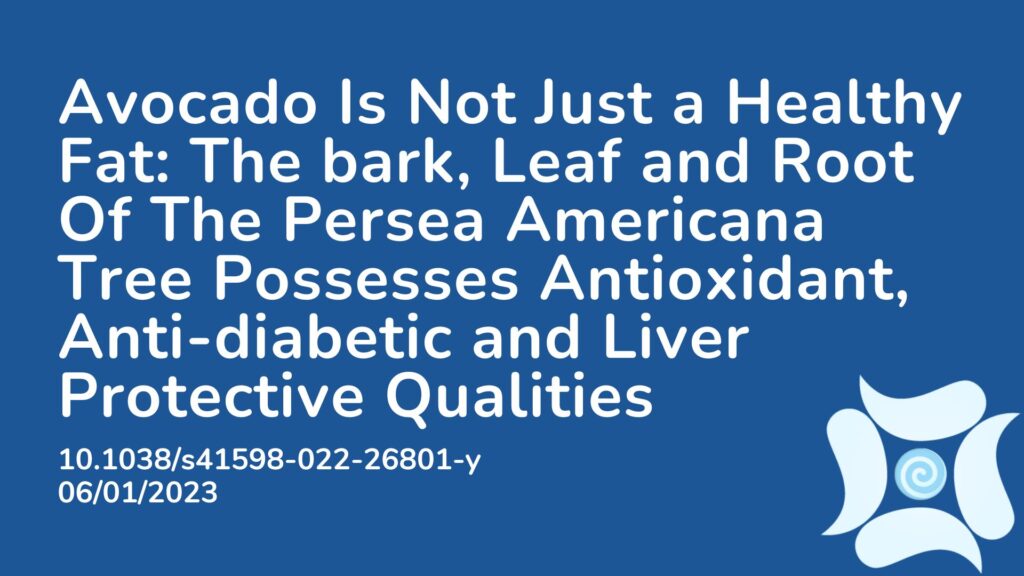Summary:
The World Health Organisation has estimated that approximately 80% of the global population incorporate herbal medicine within healthcare practises, particularly developing countries. Although it is commonly used and anecdotally has benefit, there is a significant lack in scientific evidence that has researched herbal medicine. A common medicinal plant, Persea americana, is known due to its consumed fruit the avocado, however different parts of the Persea americana plant have been used for all kinds of health conditions. The stem bark has been traditionally used to treat asthma, diabetes, fever, cough and conditions of the liver and kidney, and the leaf is used to treat high blood pressure, mouth ulcers and diarrhoea. The root is used to treat skin conditions, epilepsy and hormonal disorders in women. Persea Americana is also used to treat diabetes, mostly due to its phytonutrients and phytochemicals. This paper specifically investigated the benefits of the Persea Americana and its impact on carbohydrate metabolism, whether it is protective to the liver, and whether it has antioxidant and anti-diabetic properties. The results showed that the Persea Americana tree and its parts contain high amounts of beneficial phytochemicals. In vitro analysis indicated free radical scavenging abilities and thus antioxidant activity. The bark, leaf and root of Persea Americana also proved to produce protective chemicals for the liver, as well as antioxidant and anti-diabetic properties. The authors have concluded that Persea Americana serves as an effectove alternative to the current pharmacological drugs available for blood sugar control.
Abstract:
The medicinal use of Persea americana in the treatment of some diseases like hypertension, diabetes, is often with dearth of supporting scientific proof. Thus, we evaluated its ethnomedicinal benefits for possible scientific justification. Thirty healthy Wistar rats were randomly grouped in fives. Alloxan was used to induce diabetes in the rats in groups II to VI. The diabetic rats in group II were treated with glibenclamide, while those in group III were not treated. Also, the diabetic rats in groups IV to VI were treated with the ethanol extracts of the stem bark, leaf, and root of P. americana respectively. The parts of P. americana comparatively possess highest amounts of phenols (250.50 ± 0.68—bark), saponin (436.80 ± 3.76—leaf), flavonoid (382.80 ± 0.67—leaf) and tannins (58.34 ± 0.09—root). The extracts exhibited high reducing property (FRAP and total reducing), as well as high ABTS and DPPH free radical scavenging ability. The enzyme (alpha-glycosidase and alpha-amylase) inhibitory activity of P. americana increases with increasing concentration of the extracts. Administration of methanol extracts of P. americana bark, leaf and root to alloxan-induced diabetic rats resulted in significant (P < 0.05) decreases in AST, ALP, ALT, Total bilirubin, LPO, plasma glucose and significant (P < 0.05) increases in GSH, CAT and SOD. These effects were like that of glibenclamide. The enzyme inhibitory, hepatoprotective, antioxidant and antidiabetic properties of P. americana are some of the benefits derived from its consumption and ethnomedicinal use.
Article Publication Date: 06/01/2023
DOI: 10.1038/s41598-022-26801-y



